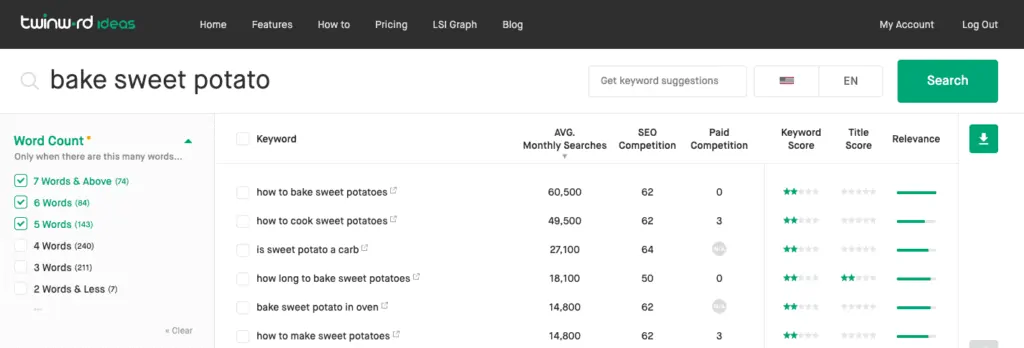As you probably know, SEO (Search Engine Optimization) is still very relevant today and helps your website to rank high on search engines such as Google. While there are many factors that affect SEO and your website rank, I accumulated important SEO Best Practices that you certainly don’t want to miss.
Let’s get right into it!
Backlinks

Backlinks have been a critical ranking factor for a long time. While many people simply try to get as many backlinks as possible, that is not the best approach. Instead, you should focus more on getting high quality backlinks. High quality backlinks are those that come from websites that are focusing on a topic similar to yours, and that have a high Domain Authority (DA).
There are several methods of building high quality backlinks. Those methods include guest blogging, backlink poaching, broken link building, starting an affiliate program, and a lot more. However, the goal of all those methods is to build as many high quality backlinks as possible to increase your own Domain Authority, and thus to increase your ranking on Google.
You can use tools like Ahrefs or Semrush to find great backlink building opportunities, or you can simply reach out to websites and blogs that are talking about similar topics like your content, and ask them to link to your blog.
SEO best practices:
- Make sure to build only high quality backlinks
- Use tools to find backlink opportunities
- Reach out to blogs and websites that talk about topics relevant to your website / content to ask for a link
Speed Up Your Website
This point is something many people don’t think about. When we are building a website, we often focus mostly on design and content, and when blogging we like to incorporate as many visuals as possible. However, all of that can slow down your website and extremely inhibit usability.
Not just the user experience will be harmed by a slow website, but it is also extremely bad for SEO. Google announced that website loading speed is a ranking factor, and research has shown that 75% of users won’t revisit websites with a loading speed of longer than 4 seconds.
There are several tools out there that you can use to check your website loading speed, such as GTMetrix. Most tools will let you know what exactly is slowing down your page, so make sure to follow their advice to speed up your website as soon as possible.
SEO best practices:
- Your website shouldn’t take longer than 4 seconds to load
- Use tools to check your website speed
Optimize For Mobile SEO

Did you know that it is more difficult to rank high with websites that are not optimized for mobile? In 2015, Google changed its algorithm to give ranking benefits to mobile friendly websites. Mobile friendly means that your website has a responsive design, and is therefore responsive to the device it is viewed on. You can easily check if your website is optimized for mobile by using Google’s mobile-friendly tester.
Next to the responsive design, you also want to make sure that your website is loading fast enough on mobile to decrease the chance of bounces. According to Google, 53% of mobile users will abandon a webpage if it takes longer than 3 seconds to load. Learn more about how to optimize your website for mobile SEO.
SEO best practices:
- Use a responsive web design
- Make sure your page loads quickly on mobile, less than 3 seconds
- Use a tool to check your mobile speed
Optimize For Voice Search

More and more people are using voice search to find content in the web. According to Google, 55% of teenagers and 41% of adults use voice search more than once a day. The use of voice search will have a huge impact on your SEO game, and changes what kind of keywords you want to focus on.
With voice search, people use more natural language and full sentences instead of searching for shorter keywords. Accordingly, long-tail keywords will become critical to your SEO. Also, when people use voice search they are mostly looking for instant answers, like: ‘what’s the best coffee shop in New York?’ , or ‘how to bake sweet potatoes?’.
Make sure that your content addresses the questions that people ask via voice search, and use your long-tail keywords to get more voice search traffic.
You can easily find what kind of long-tail keywords are commonly searched for with a keyword tool like Twinword Ideas. With the word count filter you can search for long-tail keywords, and the average monthly search volume will indicate how many people search for that long-tail keyword.
SEO best practices:
- Use long-tail keywords
- Answer specific questions within your content
Create Video Content
Videos are great to increase the user’s experience as well as for SEO. You might have noticed that Google will display videos on SERP (Search Engine Result Page). Especially informational how-to videos often come up high on SERP. For example, when searching on how to bake sweet potatoes, several instructional videos come up on the first page of Google as you can see in the image below.

When you are thinking of creating video content for your blog content or website, it is of course important to consider user search queries. You can easily find out what users are searching for with a keyword tool that provides search volume data.
Next to your video ranking high on SERP, video content on your blog post or website can have a great overall impact, such as a longer dwell time, a lower bounce rate, and it might give you a few more backlinks as well. Overall, creating high quality video content as an additional medium for your blog content or website can increase customer satisfaction as well as your ranking, so don’t miss out on that opportunity.
SEO best practices:
- Create videos for your blog and website to come up on SERP
- Create Informational / how-to videos
- Use keywords with a high search volume
Content Is King
Next to video content, don’t forget about your written content. For high rankings on Google it is key that you have high quality content that is easy to read for your users. For SEO purposes it is important that you always produce fresh and up-to date content that is relevant to your readers.
Because it can be very difficult to constantly create completely new blog posts, we compiled 11 methods for you on reach your content marketing goals without creating fresh content.
Additionally, longer blog posts will help to increase your ranking. Longer blog posts are better for SEO as they provide more helpful information to users, and also contain more keywords. Furthermore, longer content can increase the dwell time which has a positive effect on your ranking as well.
SEO best practices:
- Make sure your content is easy to read
- Produce only high quality content
- Produce longer content
- Make sure you always have fresh and up-to date content
Headings, Title Tag And Meta Description
You would be surprised how often websites use the same title and meta description multiple times. For Google, however, that is a no-go. So, make sure to always use unique titles and meta descriptions for your website content.
Next to that, the title tag and meta description offer a great opportunity for you to use your target keywords.
The length of your title tags and meta descriptions is also very important for your SEO. Currently it is best to have a title tag with no more than 60 characters (spaces included, and a meta description with at least 70 and up to 160 characters.
SEO best practices:
- Unique title and meta description for each page
- Include keywords
- Title tag: up to 60 characters (spaces included)
- Meta Description: between 70 and 160 characters (spaces included)
SEO Keywords

Keywords are one of the main factors of SEO. As already mentioned, there are many places where you should include your keywords such as titles and meta descriptions, headings, and, of course, in the main body of your website or blog content. Just make sure to do proper keyword research and to select the most relevant keywords.
Next to your main keywords, you also want to include LSI keywords and long-tail keywords to improve your SERP ranking. A good keyword tool such as Twinword Ideas can help you find both, LSI and long-tail keywords.
Last but not least, beware of keyword stuffing. While it is advised to use keywords, make sure that the keyword density lies between 0.5 to 3%.
SEO best practices:
- Include keywords in title, meta description, headings, and main content.
- Include LSI Keywords
- Include Long-Tail keywords
SEO Best Practices – Full Checklist
Below you can find the full checklist for all best practices mentioned in this post.
| SEO Factors | Best Practices |
| Backlinks |
|
| Website Speed |
|
| Mobile |
|
| Voice Search |
|
| Video Content |
|
| Blog Content |
|
| Headings, Title Tag, Meta Description |
|
| Keywords |
|
Does your website follow all best practices?
If it does, that’s awesome good job!
If not, that’s the chance for you to increase your ranking on Google and with it its traffic and even conversions! Just make sure you considered all of SEO’s best practices for your content and website.
That’s it for now, but don’t forget to subscribe to our newsletter to get the freshest content about SEO and keyword research right into your mail box.
Good luck with your ranking!
If you would like to read more on basic SEO, check out these related articles:
- Basic SEO Guide
- Easy Backlink Building Methods
- How To Audit My Website For Mobile SEO?
- What Are Long Tail Keywords?
- Where To Put Keywords In My Blog Post?





7 Comments
I didn’t know that four seconds is the maximum amount of time it should take for your website to load. My sister started a small business with her husband last year and they’re struggling to get more clients and customers. We’ll have to look into SEO further.
Denise, you’ve just delivered a premium SEO course for free – thanks for being so kind.
Nevertheless, I’ve just learnt new SEO tips for my blog and clients’ websites.
Thanks a million.
Very informative! Thanks for letting us know more deeper regarding SEO. I was always in search of similar informations you have shared. It is truly helpful. Thanks again. Waiting for more in the upcoming days as well. Have a great Day!!
I appreciate what you said about making sure that your website doesn’t take longer than 4 seconds to load. My friend wants to start her own business and will have to do most promotion for it online. She’ll have to make sure to get help with search engine optimization and other online marketing strategies.
Enjoyed reading the article above , really explains everything in detail,the article is very interesting and effective.Thank you and good luck for the upcoming articles
thanks for this awesome information about SEO technique. it is great stuff. I apply these techniques to my blog. thanks a lot.
Another big interesting article. In this post, you gain the best knowledge about rule balance SEO. I am so appreciated by your blog because it’s really helpful for all buyers. I also get much knowledge from this blog.thank you keep sharing.